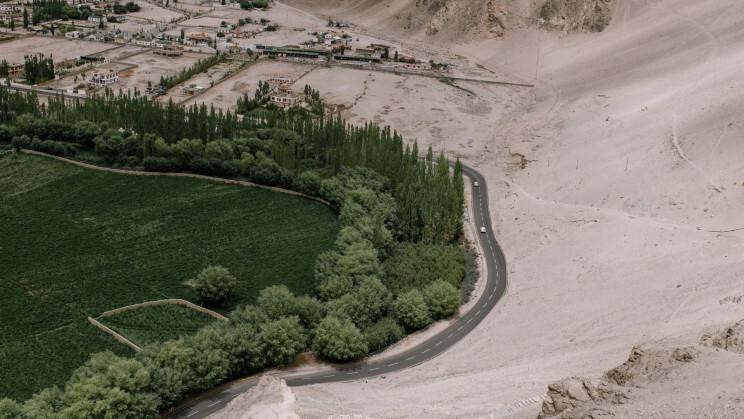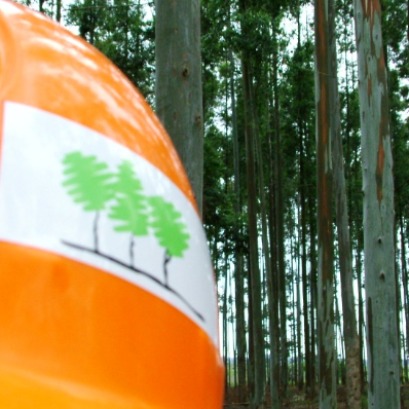
China is carrying out the most ambitious reforestation project in the world: a "wall" of 4,500 kilometers of trees
The objective is to stop the desertification that threatens the Asian country and occupies 27% of its surface According to a United Nations report, desertification is accelerating every year around the world. A phenomenon that has grown especially during the last century and this one, affecting especially areas prone to being arid, semi-arid and with dry climates. In total, the Earth has lost a third of its arable land. And one of the most affected countries is China, since 27.4% of its surface is desert, affecting 400 million people. To solve this, it has undertaken the largest reforestation project in the world.
The problem of desertification. Every year sandstorms eat up 2,300 square kilometers of agricultural land in the Asian country. Many times it is due to “aeolian desertification”, caused by wind erosion after the vegetation has been destroyed. It also happens due to the “loss of water and soil”, caused by water erosion distributed mainly on the Loess Plateau. And by “salinization”, caused by poor water management and “rock desertification”, which occurs in the karst region of southwest China.
"The main problem is that an excessive population lives in drylands and exceeds the carrying capacity and ecological restoration of this area," explained Feng Wang, professor at the Institute of Desertification Studies of the Chinese Academy of Forestry, in this article in Climate Diplomacy.
The Great Green Wall project. To curb the threat of desertification, China launched an ambitious project in 1978: the Great Green Wall. It is the world's largest reforestation initiative, which is expected to continue until 2050. The goal was first to stop the expansion of the Gobi Desert and provide wood to the local population. Now, the Government has proposed other plans, such as planting a "wall" of trees that will extend around 4,500 kilometers long in several cities.
Results. The Government is very optimistic about the long-term results of this process, stating that thousands of moving dunes have so far been stabilized and the frequency of sandstorms across the country reduced by a fifth between 2009 and 2014: in Beijing alone they were reduced by 70% between 2008 and 2018. According to a study published in the journal Ecological Processes by scientists at the Institute of Applied Ecology of the Chinese Academy of Sciences, forested areas have increased by 158,051 square kilometers .
The number of trees planted is around 66,000, mainly of the Enterolobium cyclocarpum species and others from the Fabaceae family, given their adaptability to these terrains. According to researchers, the reforestation project has created a significant carbon sink that is capable of absorbing 5% of China's total industrial CO2 emissions between 1978 and 2017.
The tendency. All this effort is part of China's strategy to extend its natural surface in the country. In addition to the Great Green Wall, they have implemented other measures such as a series of laws to return part of cropland and pasture to forests and grasslands. And that is costing them huge amounts of money, of course.
Investment in reforestation was around 70 billion euros in the first five years of the 2010s, according to the United Nations Green is Gold report. To finance the cost, sanctions have been increased for companies that practice deforestation.
Some experts are skeptical. However, some experts believe that this initiative, although serving a good purpose, is not working properly. Jennifer L. Turner, director of the China Environmental Forum at the Woodrow Wilson Center, points out that people “are planting a lot of trees to stop desertification, but then no one really cares about them and they die.” She argues that many of the trees planted in areas where they do not grow naturally simply die within a few years.


IT MAY INTEREST YOU
 Renovations, construction of houses and extensions made of wood gain speed, comfort and efficiency in the country
Renovations, construction of houses and extensions made of wood gain speed, comfort and efficiency in the country
In private neighborhoods, the Coast, the Coast and Patagonia, the choice of homes with dry works is growing. Speed, low environmental impact and energy savings.
 They present the Elárbol project in the Ecology Cycle
They present the Elárbol project in the Ecology Cycle
The transmedia initiative reflects the importance of Argentine native flora and focuses on the carob tree as an emblem tree. Today, at 6:�� p.m., at the Argentine Library This Thursday, October 3�, at 6 p.m., the Elárbol project is presented in the Ecology Cycle coordinated by Sergio Rinaldi at the Argentine Library.
 Between Rivers | Everything ready for the traditional INTA Concordia and AIANER Forestry Days
Between Rivers | Everything ready for the traditional INTA Concordia and AIANER Forestry Days
The traditional Entre Ríos Forest Days, which this year celebrate their 39th edition, will take place on November 7 from 8 a.m. to 6 p.m. at the INTA Concordia facilities, located at Yuquerí Station and Railway tracks.





















